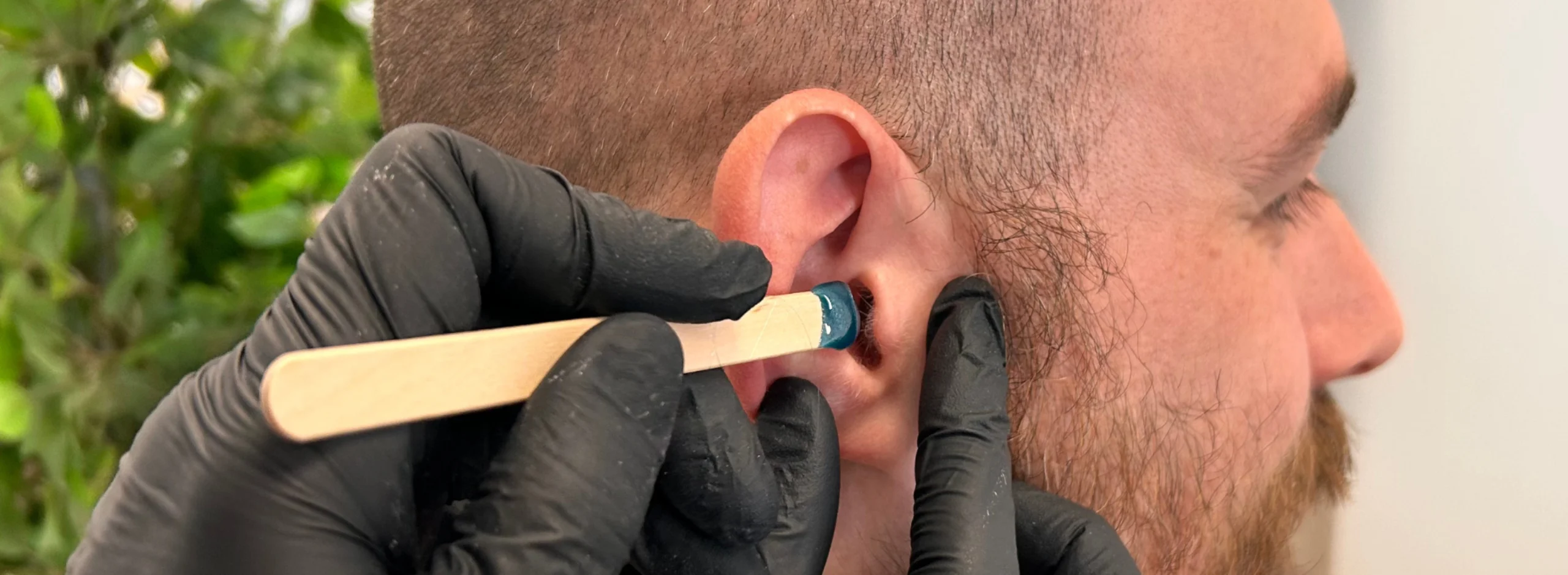FREE SHIPPING on orders over $400!
FREE SHIPPING on orders over $400!
FREE SHIPPING on orders over $400!
FREE SHIPPING on orders over $400!

Ear hair removal is a delicate service that requires precision, expertise, and the right tools — especially when performed by licensed estheticians and salon professionals. While ear hair plays a protective role, excess or visible growth can be a cosmetic concern for many clients. This guide explores effective, safe, and professional-grade techniques to remove ear hair, helping you deliver outstanding results in your salon.
Ear hair may seem like a small detail, but its presence — or excess — can significantly impact a client’s appearance and confidence. For salon professionals, understanding the nature and purpose of ear hair is essential before choosing the appropriate removal method.
Ear hair growth is primarily influenced by hormonal changes and genetics, particularly in older adults. Androgens — male hormones such as testosterone — are responsible for increasing the density and length of hair in the ears, especially after middle age. This explains why most clients seeking ear hair removal are men over the age of 40.
These hairs serve a purpose: they trap dust and dirt, preventing unwanted particles from reaching the eardrum. Nevertheless, overgrowth of hair or strands extending from the ear canal can be considered unsightly by many.
Professionals should clearly distinguish between the outer ear (auricle) and the ear canal when performing removal:
Removal techniques should always vary depending on which part of the ear is being treated. The key is to eliminate unwanted hair without compromising the natural barrier function these hairs provide.

Many clients are not yet prepared to opt for permanent solutions. Temporary approaches continue to be widely favored thanks to their ease of access, lower cost, and immediate effectiveness. Nonetheless, each option carries its own advantages and drawbacks.
Waxing is one of the most effective and salon-preferred techniques for removing ear hair quickly and cleanly. Using hard wax for professional use, estheticians can safely remove clusters of hair from the outer ear and just the entryway of the ear canal.
Advantages:
When using hard wax specifically designed for sensitive areas, professionals can ensure minimal discomfort and optimal adherence to coarse hair without sticking to the skin.
Avoid inserting wax deep into the canal — this area is off-limits due to the risk of damaging the eardrum.
For clients with light or sparse hair growth, trimming with a small pair of rounded scissors or a dedicated ear hair trimmer can be a quick fix. It’s particularly useful for clients reluctant to try waxing or with very low pain tolerance.
Drawbacks:
Although quick and nearly painless, trimming only addresses the surface and should be considered a short-term or temporary measure.
Using tweezers to pluck ear hair can offer longer-lasting results than trimming, as it pulls hair from the root. However, it can be painful and may cause redness, irritation, or ingrown hairs.
Only a skilled professional should perform plucking in this area, ensuring the technique does not traumatize the sensitive skin near the canal entrance.
Although rarely recommended, some professionals may use a fine razor or ear shaver on the outer ear area. It’s quick and easy but also prone to stubble, rapid regrowth, and potential nicks on the uneven ear surface.
In general, shaving should be avoided in professional settings where clean and longer-lasting methods like waxing are available. Temporary methods provide immediate visual improvement, but they do not address the root cause of growth. For clients seeking a long-term solution, permanent options may be the right recommendation.
For clients who want a long-term solution, permanent removal methods provide consistent results and reduce the need for regular upkeep. Knowing how to safely and effectively offer these services is key for advanced estheticians.
Laser technology uses targeted light to destroy hair follicles, slowing and often stopping future growth. This method works best on dark, coarse hair and requires a series of treatments spaced a few weeks apart.
Pros:
Cons:
Professionals offering laser treatments must be trained and certified, particularly when treating areas close to the face and ears. It’s essential to avoid shining the laser beam directly into the ear canal due to safety risks.
Electrolysis involves inserting a tiny probe into each hair follicle and applying an electric current to destroy the root. It’s FDA-approved for permanent hair removal and suitable for all hair colors and types.
Benefits:
Limitations:
For clients asking how to remove ear hair permanently or how to remove ear hair forever, electrolysis is the most definitive option. It’s ideal for targeting individual hairs in delicate zones like the outer ear.
When performing ear hair removal, salon professionals should always prioritize client safety and comfort. Here are essential guidelines:
Products like soft wax should be avoided for ear hair as they can be harder to control and risk dripping into the canal.
Only wax labeled for professional use should be employed, as at-home kits often lack the precision and safety required for this area.
Practicing these guidelines ensures the client’s comfort, reduces risk of burns, and maintains the salon’s safety standards.
Proper aftercare ensures clients experience minimal side effects and maximizes the duration of results. Share these tips post-treatment:
Following these best practices maintains client satisfaction and encourages return visits for regular maintenance.
Ear hair removal, when done professionally, is both an art and a science. Understanding the nuances of hair growth, choosing the right techniques, and applying safety-first protocols ensures effective results and client comfort. Whether using hard wax, laser treatments, or electrolysis, professionals have a range of options to address ear hair — temporarily or permanently.
Estheticians should always choose high-quality products suited for salon use and educate clients on safe aftercare. Mastering «how to remove ear hair» not only elevates the client experience but also reinforces the salon’s reputation for detail-oriented grooming services.


